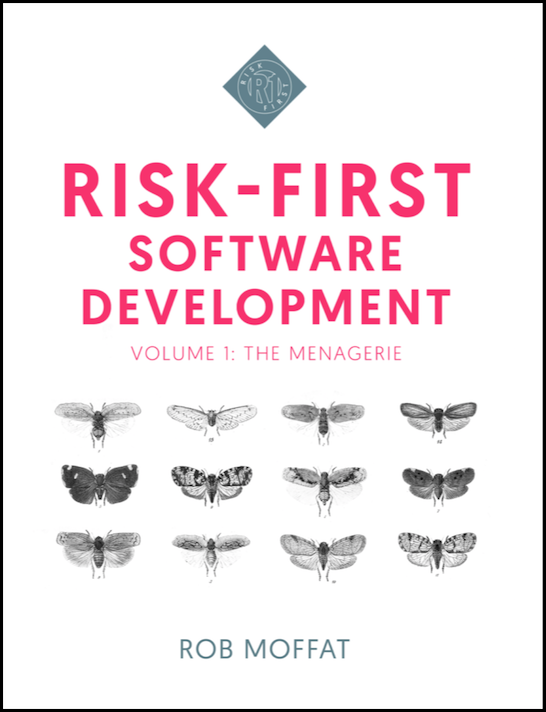Risk-First Analysis Framework
Start Here
Home
Contributing
Quick Summary
A Simple Scenario
The Risk Landscape
Discuss
Please star this project in GitHub to be invited to join the Risk First Organisation.
Publications

Click Here For Details
Glossary
Abstraction
The process of removing physical, spatial, or temporal details or attributes in the study of objects or systems in order to more closely attend to other details of interest.
Agent
Agency is the capacity of an actor to act in a given environment. We use the term agent to refer to any process, person, system or organisation with agency.
Feedback Loop
The process of testing an Internal Model by testing it, through taking action to Meet Reality. Typically, we talk about short or long feedback loops, depending on the intervals between Meeting Reality.
Goal In Mind
A picture of the future that an individual or team carries within their Internal Model; An imagined destination on the Risk Landscape.
Internal Model
The model of reality held by an individual, team, software system or other Agent. You can regard the concept of Internal Model as being what you know and what you think about a certain situation. An internal model represents reality: reality is made of matter, whereas the internal model is information.
Obviously, because we’ve all had different experiences, and our brains are wired up differently, everyone will have a different Internal Model of reality.
- Within an organisation, we might consider the Internal Model of a team of people to be the shared knowledge, values and working practices of that team.
- Within a software system, we might consider the Internal Model of a single server, and what knowledge it has of the world.
- A codebase is a team’s Internal Model written down and encoded as software.
Meet Reality
Any moment where we test an Internal Model by exposing it’s predictive power against reality. Note that “Reality” might be limited in some way, for example, a trial period or test users.
Payoff
Payoff refers to the value of the actions we take. When we decide on a course of action, we have in mind a risk we wish to manage. If the action is likely to have a big positive effect on the risk of a project, we say it has a promising payoff, whereas if the action fails to manage the risk, then it hasn’t paid off.
Risk
A possibility of loss or cost. Anything that can go wrong on a project, or is going wrong, but resists exact realization. We talk about risk because we wish to recognise both the range of possibilities and the range of cost.
Usually broken down into:
Attendant Risk
A Risk you expect to face as the result of Taking Action.
Hidden Risk
Risks you aren’t aware of when you consider Taking Action. i.e. an unknown unknown.
Mitigated Risk
Risks that, as a result of Taking Action have been minimized.
Upside Risk
The possibility of things going well, and leaving us with a benefit. We may take action to maximize the likelihood and return of upside risks.
Risk Landscape
A hypothetical landscape on which risks can be placed. Taking Action means making a move on the Risk Landscape to reposition a project so that it has a different profile of Attendant Risks.
Taking Action
Refers to any activity in the project. Actions are usually in order to manage some kind of risk. At the same time, Taking Action usually means interacting with reality and updating the Internal Model.